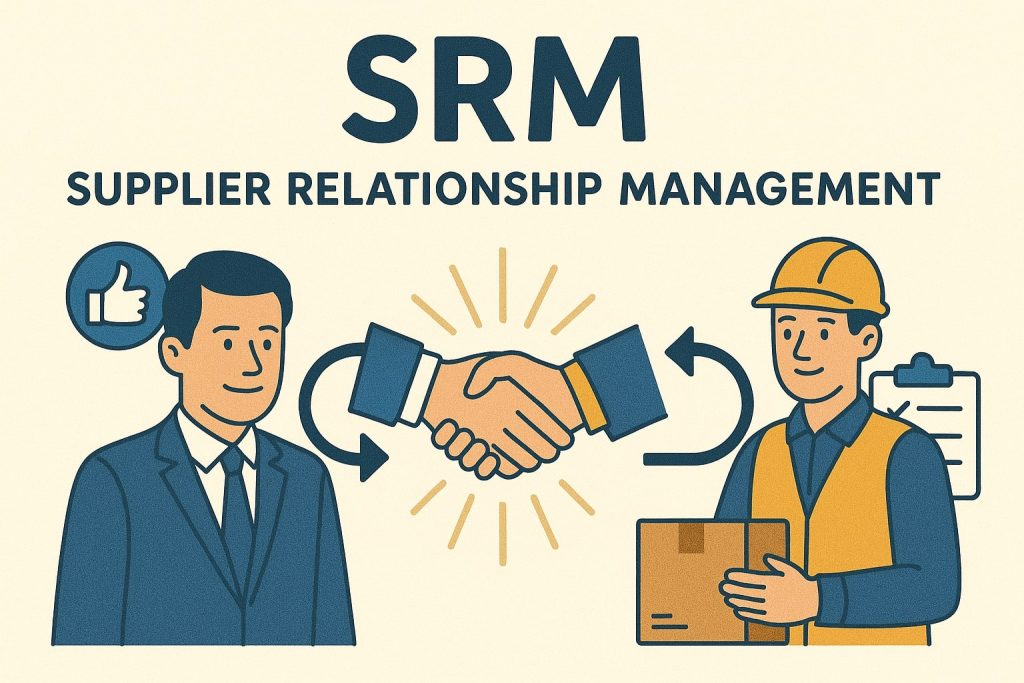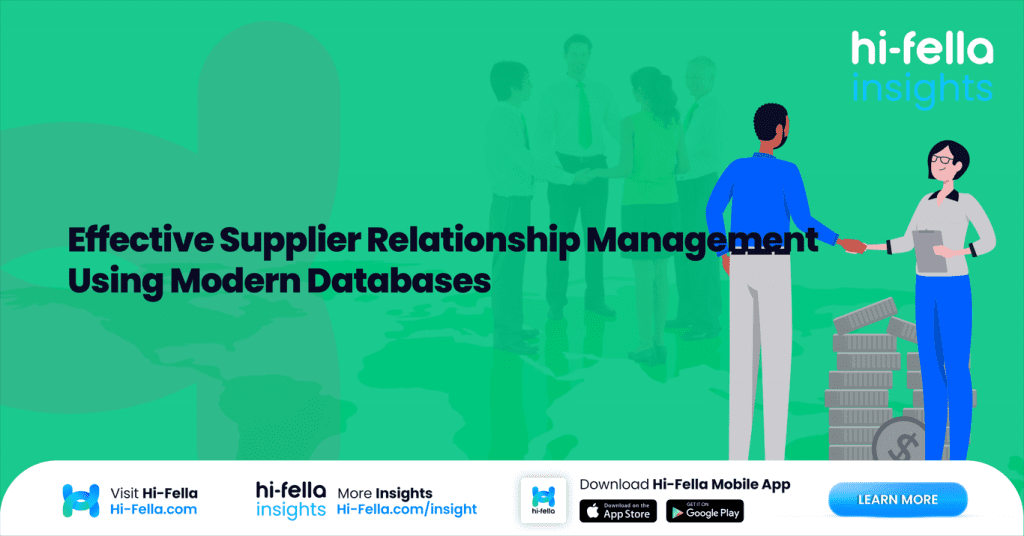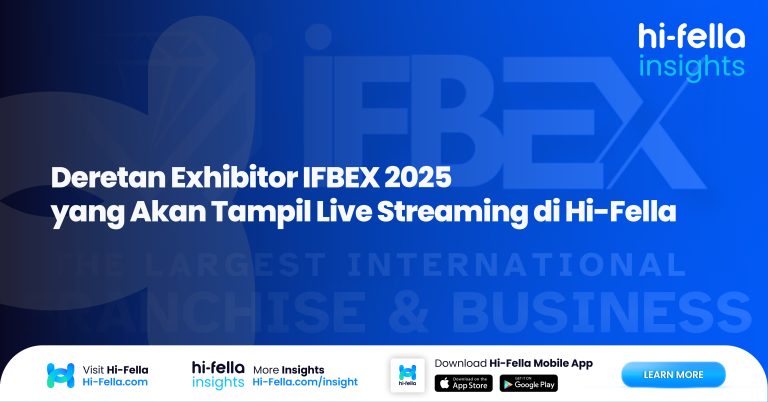In today’s interconnected trade environment, supplier relationship management requires more than spreadsheets and emails. As supply chains become more complex and expectations around ESG compliance and regulatory accountability grow, businesses must modernize how they engage, track, and collaborate with suppliers. Traditional systems lack the agility, accuracy, and visibility needed to respond to disruption or to scale with strategic growth.
Enter modern databases and platforms like Hi-Fella, designed to make Supplier Relationship Management (SRM) smarter, faster, and more resilient. This article explores how companies can transform supplier engagement through digital tools, real-time data, and centralized visibility — all while ensuring trust and transparency at scale.
Why Supplier Relationship Management (SRM) Needs a Digital Upgrade

Managing suppliers in 2025 is no longer just about cost and delivery — it’s about trust, compliance, and adaptability. Yet many companies still rely on outdated systems, leading to miscommunication, inefficiencies, and increased risk exposure.
According to a recent McKinsey report, companies with poor supplier visibility experience up to 15% higher costs and are 35% more likely to suffer major disruptions. In contrast, organizations that digitize their SRM processes enjoy faster onboarding, higher supplier satisfaction, and more agile response times.
Key reasons why SRM needs a digital transformation:
1. Supply Chain Complexity
Modern supply chains span multiple countries, languages, regulatory systems, and time zones. As companies increasingly work with multi-tier supplier ecosystems, the traditional methods of managing relationships through emails, spreadsheets, or siloed systems become unsustainable. Without centralized visibility, it’s nearly impossible to track performance, ensure alignment, or react quickly to supply-side issues.
Digital SRM platforms offer a unified view of supplier data, performance metrics, and contract terms — regardless of location or tier. These platforms enable procurement teams to monitor real-time updates, automate workflows, and collaborate across internal and external stakeholders. In a globalized economy, this kind of connected intelligence is critical to staying competitive and compliant.
2. ESG Compliance
Environmental, Social, and Governance (ESG) expectations are no longer optional — they’re regulatory requirements in many regions. From carbon footprint disclosures to labor rights auditing, businesses must prove that their entire supplier network adheres to ethical and sustainable practices. Manual tracking of ESG metrics across a dispersed supply base is not only inefficient but also highly prone to errors and gaps.
Digitally upgraded SRM systems allow companies to embed ESG criteria into supplier onboarding, scorecards, and performance evaluations. Integrated ESG dashboards can flag non-compliant suppliers, automate reporting, and ensure that procurement decisions align with sustainability goals. This helps safeguard brand reputation, meet investor demands, and avoid regulatory penalties.
3. Disruption Readiness
The past few years have exposed just how vulnerable traditional supply chains can be. Events like the COVID-19 pandemic, trade wars, and raw material shortages have highlighted the importance of agility and risk responsiveness. Companies relying on outdated SRM systems are often slow to detect early warning signs or mobilize alternative sourcing strategies.
Digital SRM platforms integrate predictive analytics, AI-powered risk assessment, and real-time alerting to help companies anticipate and navigate disruptions. With dynamic supplier profiling and contingency planning tools, businesses can evaluate alternate suppliers, shift orders, or adjust production timelines with minimal delay. In 2025, disruption readiness is not reactive — it’s built into the DNA of digitally mature SRM.
By moving SRM onto centralized, intelligent platforms, companies can mitigate risk, boost efficiency, and build long-term supplier loyalty.
The Role of Centralised Supplier Databases in Building Trust and Transparency
A centralized supplier database serves as the foundation of a resilient and transparent supplier management strategy. It allows organizations to store, organize, and monitor all relevant supplier data in one secure, accessible location — eliminating the silos that hinder communication and accountability.
Leading companies like Siemens, P&G, and Maersk have adopted centralized systems to:
- Track supplier performance and risk metrics over time
- Store and share critical compliance documentation
- Reduce duplication across procurement, legal, and finance teams
- Enable real-time collaboration with verified vendors
For example, Maersk’s supplier database integrates environmental and labor compliance data alongside shipping performance, allowing procurement managers to make values-aligned decisions in minutes, not weeks.
With this approach, SRM becomes proactive, transparent, and far more strategic.
Leveraging Real-Time Data for Strategic Decision-Making
Supplier decisions shouldn’t rely on outdated audits or gut instinct. With modern SRM platforms, companies can use real-time data to make smarter, faster procurement calls — and predict issues before they cause disruption.
Today’s best SRM tools integrate:
- Financial health monitoring via external credit ratings
- Geopolitical and environmental risk alerts
- ESG scoring based on third-party audits
- Predictive analytics to flag potential quality or delivery problems
For instance, if a supplier in a politically unstable region shows signs of financial stress, the system can recommend verified alternatives — preserving business continuity without delay.
This real-time intelligence empowers procurement teams to move from reactive to strategic, reducing costs and enhancing supply chain resilience.
SRM Challenges in a Geopolitically Volatile and Regulated World
From trade sanctions to forced labor laws, regulatory pressures are transforming how companies select and manage suppliers. Add in global uncertainty — like the Russia-Ukraine conflict, U.S.-China trade disputes, and EU sustainability mandates — and SRM becomes a risk management priority.
New challenges include:
- CSDDD (EU’s Corporate Sustainability Due Diligence Directive) requiring full value chain traceability
- U.S. import restrictions targeting specific materials or regions
- Ongoing trade wars affecting tariffs and sourcing feasibility
- Climate-linked supply volatility, such as droughts impacting agricultural goods
In this environment, businesses need SRM systems that enable:
- Instant filtering for compliant suppliers by country or product category
- Fast onboarding of alternative vendors across new regions
- Transparent audit logs to prove due diligence
- Integrated compliance intelligence tied to supplier profiles
Modern SRM platforms make it possible to stay compliant, adapt quickly, and safeguard reputation — all without slowing down operations.
Join Hi-Fella Today!
At the intersection of smart trade and modern SRM, Hi-Fella empowers global businesses to manage supplier relationships with precision, speed, and confidence.
Hi-Fella offers:
- Verified supplier profiles with compliance and documentation transparency
- Private B2B showcases for high-intent, trust-based engagement
- Shared dashboards and collaboration tools for seamless communication
- Built-in compliance guidance for every market you enter
Whether you’re sourcing new vendors or scaling to new regions, Hi-Fella simplifies the process with tools that reduce friction and enhance trust.








